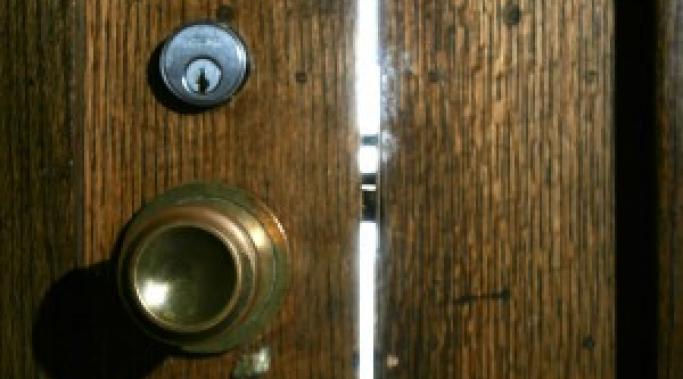Recently, I was picking up my client from summer school and as I was standing in the hallway, I noticed how diverse the population walking by me was. My client has a developmental disability as well as a mental illness, so the school where her summer classes took place was mainly for those who needed a little extra support.
I saw individuals who had Autism, Down syndrome, aggressive behaviors, Cerebral Palsy and other different disabilities or disorders that allowed them to take summer classes at BOCES.
As I watched the students walk by, I wondered how difficult it was for outsiders to see these wonderful kids as having “unique abilities” rather than having disabilities.
Speaking Out About Self Injury
In this audio blog, a paragraph from a chapter is read that brings forward the issue of Angel vs. Devil. Below is the general idea for the novel, Noon, that I recently published. One character is in the mental health unit at a big hospital in a little town where she receives treatment.
And yes, she self-harms.
Sometimes, people telling you to just stop cutting or burning or scratching is not enough motivation to actually stop the self-injury behavior. It is like asking someone not to text their ex-boyfriend or ex-girlfriend when they’re staring at a message. It is something they should not do, but they can’t help themselves, so they do it.
It is much more difficult to find a motivating factor to help stop self-harm than many believe. Of course, there is therapy and family and friendships (self-injury treatment), but in the mind of a severe self-injurer, sometimes that is not enough.
It often takes time to find motivation to begin self-harm recovery and end this addictive struggle with self-harm.
Those struggling with drug addiction may have people around who understand or relate to their situation. Even some with severe depression and anxiety have some kind of support system, since action can be taken quickly if willing to get help. Alcohol addicts also have meetings and groups where they can discuss their frustrations in a social, private setting.
What about self-harmers?
Whether you haven’t self-harmed in years or are currently in the battle, flashbacks of weak moments always pop up. It's inevitable that you're going to see a scar and remember the reason it was put there. These moments can come from a song, a place or even a person.
Such as an ex-boyfriend or girlfriend.
It’s the sad truth, but celebrities have taken over the world. For some reason, we find it interesting that Kim Kardashian named her daughter North West and we continue to watch re-runs of Jersey Shore even though we know it’s killing our brain cells. Celebrities take us away from the realities we live in and, sometimes, it is a positive way to escape.
However, what happens when the paparazzi puts up photos of a celebrity with cuts on his or her arms (self-harm scars)? How do the fans react to the self-harm of celebrities?
It is terrifying to talk about your self-harm if you are having difficulty coming to terms with it yourself. It is even scarier to talk to loved ones about your self-harm issues because it can be just as scary for them too. Not many people understand why self-injurers do what they do and where the need to cut or burn drives from. Sometimes, even the self-harmer doesn't know why or how they started to do what they do. Distraction? Accident? Boredom? No matter what the trigger was and how it started, self-injury becomes an addiction and it can be terrifying to try to make others understand it.
There are not always obvious signs of self-harm. Many people are quiet about it – which is understandable since it is a personal addiction. Because there is not a “Self-Harmers Table” in the cafeteria or a “Self-Harmers Staff Room” at work, it tends to be tough to recognize who is doing what.
However, sometimes it is too obvious to ignore.
When I used to cut, I hid my marks behind leather bracelets and watches. I’d put foundation on my scars and fresh wounds and made sure I had some with me at all times. I did everything in my power to make it so I looked like the typical, happy teenager.
Inside, I was screaming.
As a self-harmer, you’re going to have scars. You’re going to have cuts or burns or scrapes or bruises that stick around for the rest of your life. Sometimes, these marks can be hidden and forgotten about. However, some marks are not that easy to push aside and can haunt you.
I wasn’t a self-harmer who needed to dig real deep when cutting. I was calm after some small marks and a little pain because, that in itself, redirected me. (read: Self-Injury Cutting: Cutting Yourself to Relieve Emotional Pain) However, I do have self-harm scars that have lingered over the years that I do not think are going to go away.
Some of you may be the self-injurers who have a hard time hiding your marks with some foundation and bracelets. Some of you may feel embarrassed to wear short sleeves or a bathing suit because it is visible that you’re painted in pain.
For recovered self-harmers and those still struggling, we are “living with ladders.”
Everyday is a struggle – all those dealing with anxiety's racing thoughts and self-harm understand that. But anxiety is an issue that every human being puts up with, whether or not they want to admit it. For those who cut, pull hair, burn or head-bang, anxiety is usually what controls the self-harming behaviors (When Anxiety Leads to Self-Injury).








